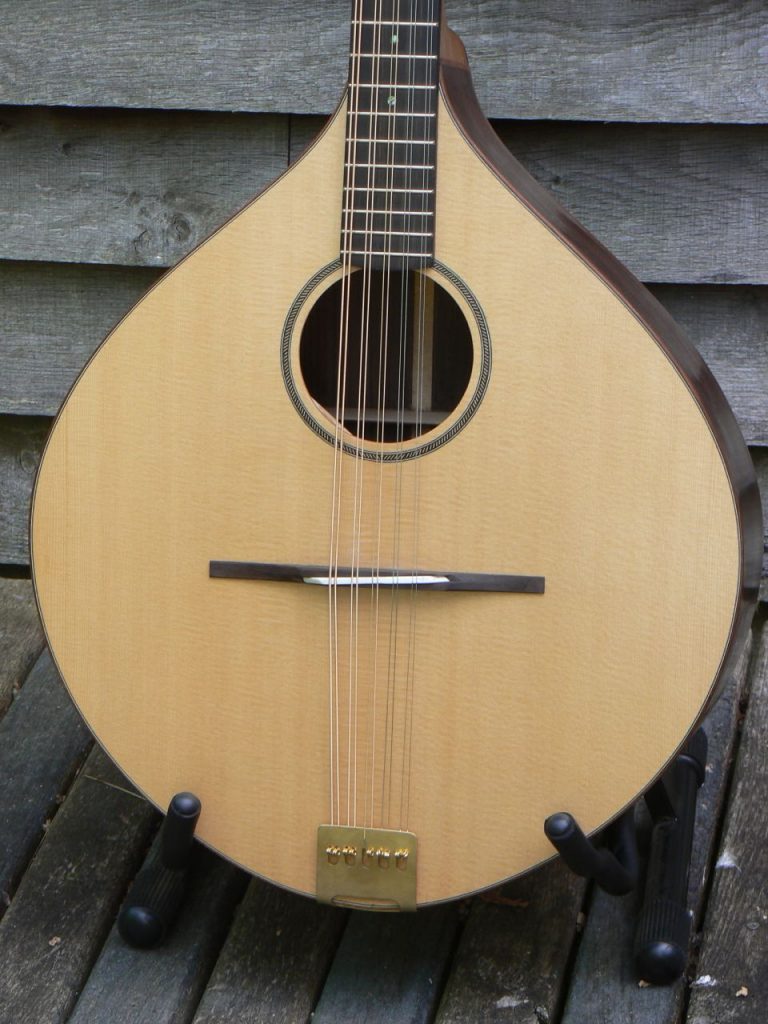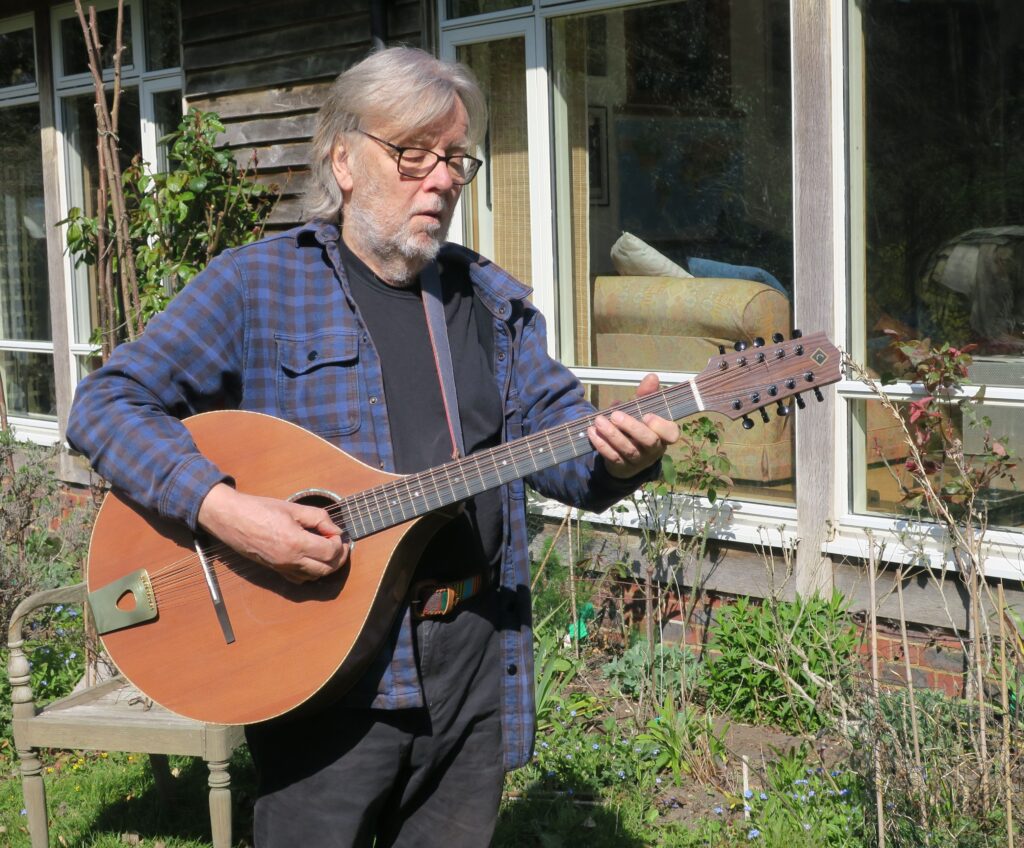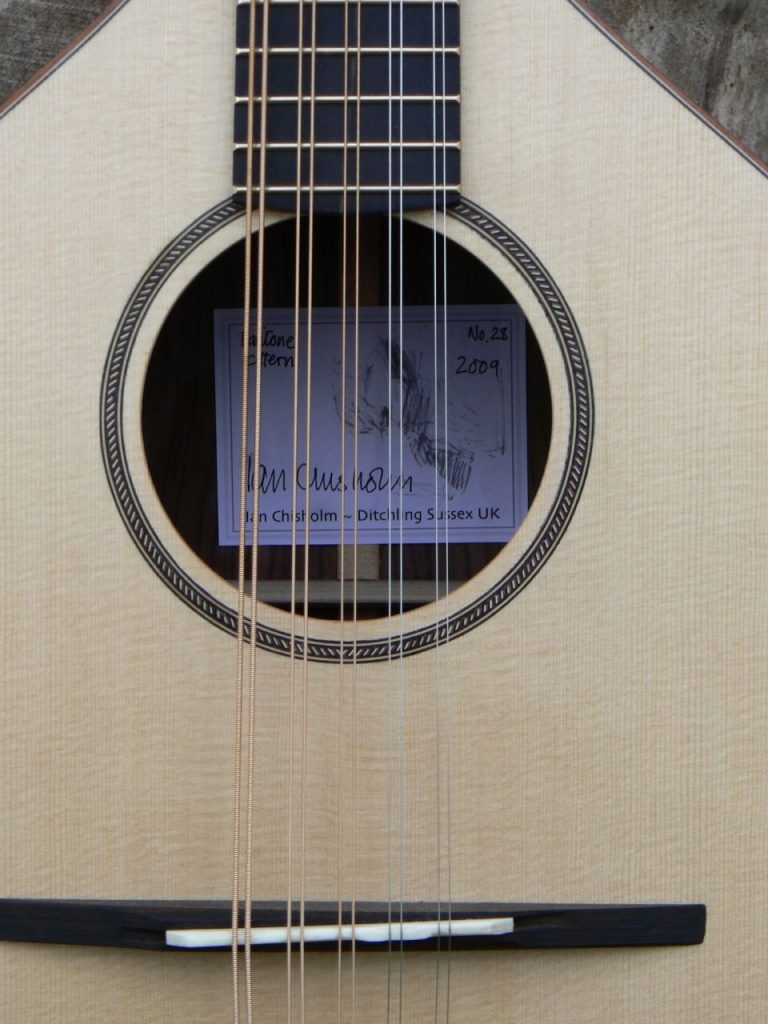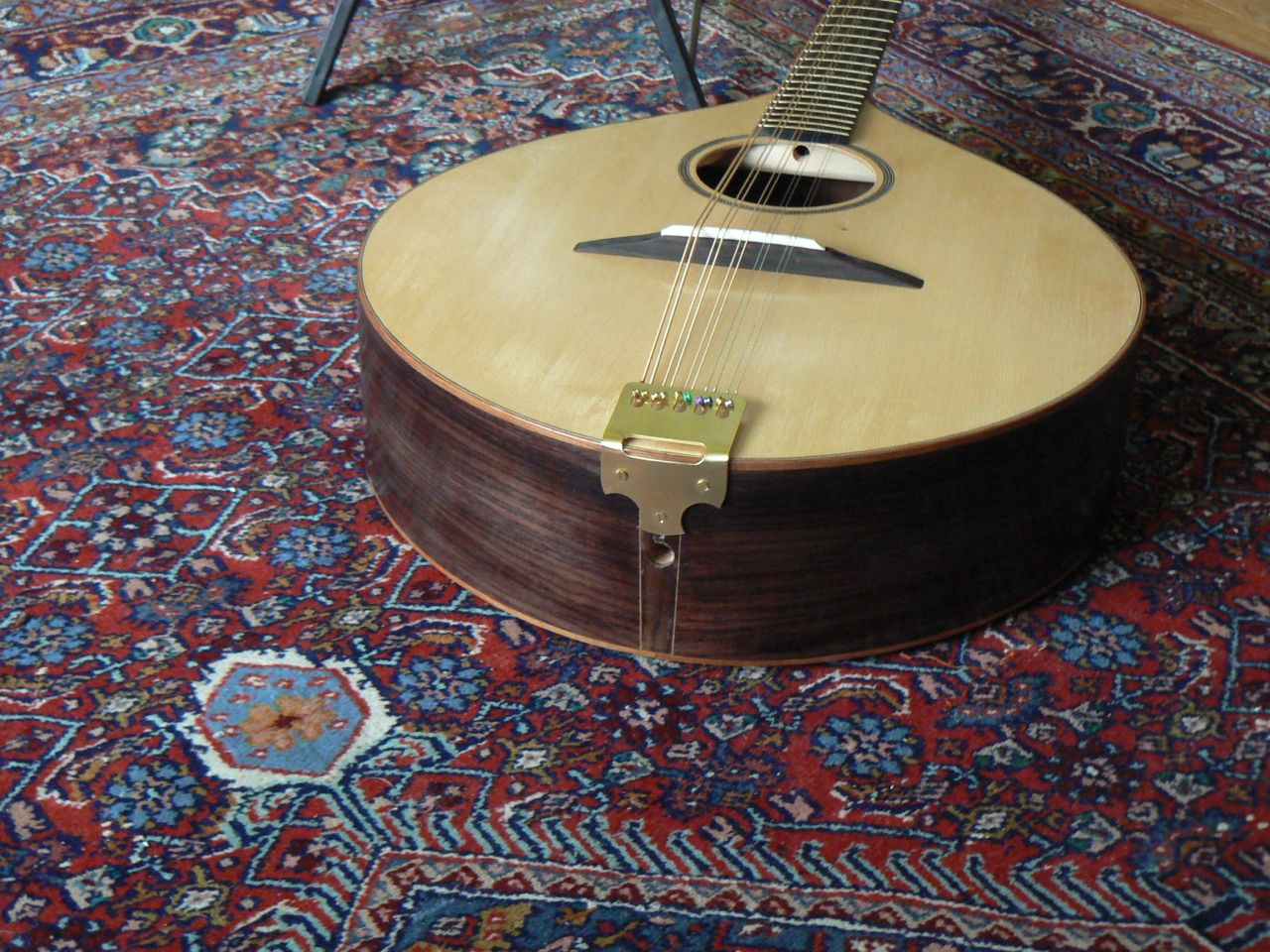




Baritone Citterns

Baritone Cittern 2021
Indian rosewood and redwood
~




Baritone Cittern 2009. This was the first one of these, made for Doc Rossi who as part of the brief pointed me at “The Duet” painted by Cornelis Saftleven c. 1635. Rosewood back and sides, sitka spruce front, mahogany neck. 5 courses tuned C G d g c’. Scale length 670mm. The instrument could also be described as 10 string mandocello or a liuto cantabile.
Audio clip of Doc Rossi playing his Baritone Cittern
“Although it is simply entitled The Duet, the picture is a self-portrait of the artist Cornelis Saftleven, then aged 28, probably with his younger brother Herman, with whom he lived at the time in Utrecht; in the previous year they had collaborated in painting a commissioned work. Saftleven was noted for his genre paintings, but not for vanitas pictures. Moreover, the instruments are painted with considerable care, especially the cittern with its highlights. Artists liked to prove that they were men of culture and did not want to be treated as mere artisans; here they are shown not only with the instruments they play but surrounded by a gamba, a lute, and a transverse flute. Furthermore, Cornelis plays a particularly large cittern, not the smaller instrument that could easily have been obtained as an artist’s prop. If it is a bass cittern, and such instruments are occasionally shown in other paintings, it would better suit the role of accompanying the violin, and Cornelis probably had it made especially for him.”
from Early Music America magazine, vol 16. no 1, information provided by Andrew M. Hartig
This is in no way an attempt to produce a reproduction antique instrument, rather a modern equivalent suitable for playing low register parts in a group. The description of the painting refers to bass cittern which I would expect to be tuned down to E. I don’t think that’s a realistic tuning hence the baritone tag, tuned down to C like a ‘cello. Indeed my instruments could equally be described as 10 string mandocellos.

“The Duet” painted by Cornelis Saftleven c. 1635. In the Akademie der Bildenden Künste, Vienna. Oil on panel, 34 x 53 cm.
